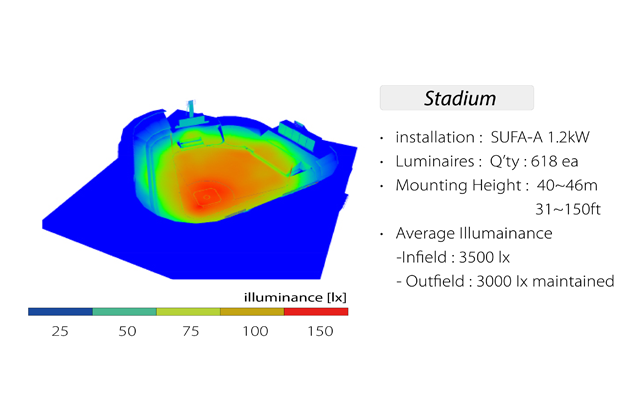Baseball
Home > Application Guide > Outdoor > Baseball

Lighting design criteria
- If we only consider the average luminance in the playing field, it would be ideal to design the luminance levels in the infield and outfield to be the same. Considering the ball speed in the infield and outfield and the frequency of fly balls, however, we find it necessary to design the luminance in the infield and outfield to be different.
- The design must prevent shadows and ensure that the vertical plane luminance is not inadequate, since these conditions impede athletes and spectators.
- The design must prevent light pollution by taking account of the surrounding environment
Recommendation of Minimum Lighting Levels
| Sport | Illuminance Level (Em. Horizontal) Lux * (Non CTV) | ||||||
|---|---|---|---|---|---|---|---|
| ClassⅠ | ClassⅡ | ClassⅢ | |||||
| Em Lux |
Uo Min/ave |
Em Lux |
Uo Min/ave |
Em Lux |
Uo Lux | ||
| Baseball | In Fld | 750 | 0.7 | 500 | 0.7 | 300 | 0.5 |
| Out Fld | 500 | 0.5 | 300 | 0.5 | 200 | 0.3 | |
- ※ European criteria (Source - EN 12193:2007)
- - ClassⅠ: Top Level Competition
- - ClassⅡ: Intermediate Level Competition
- - ClassⅢ: Lower Level Competition & Suspervised Training
- ※ Em is the Maintained Illuminance Level (specification level) and is the design illuminance level, below which the lighting should not be allowed to fall during the period to planned maintenance.
3D data image






